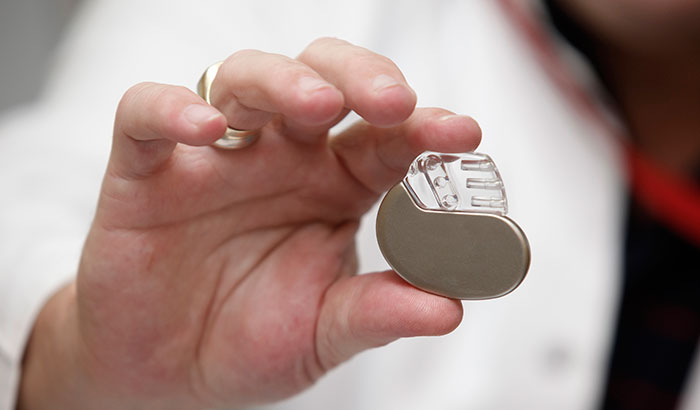Office of Research & Development |
 |
Office of Research & Development |
 |
August 2, 2018

Photo ©iStock/Paperkites
VA researchers invented the first clinically successful cardiac pacemaker, in 1960. This invention prevents potentially life-threatening complication for irregular heartbeats in many patients.
In 1958, Dr. William Chardack of the Buffalo VA hospital (now the Buffalo VA Medical Center) teamed up with engineer Wilson Greatbatch and Dr. Andrew Gage to implant an electrode in a dog attached to a pulse generator. They worked for the next two years to refine their design of a unit that could be implanted in the body and would maintain the same pulse rhythm for long periods of time.
In 1960, they implanted a pacemaker into a 77-year-old man, who lived for 10 months after the surgery. In that year, they implanted pacemakers into nine other patients, several of whom lived for more than 20 years after the implant. Chardack and Greatbatch's design was the first implanted pacemaker to be commercially produced.
Today, more than 3 million people worldwide have implanted cardiac pacemakers. The VA Pacemaker Program monitors more than 11,000 Veterans with pacemakers to detect battery failures and improve patients' quality of life. The program keeps data on about 60,000 patients.
Principal Investigators: William Chardack, M.D., Wilson Greatbatch, M.S.; Buffalo VA Medical Center
Selected publications:
Chardack WM, Gage AA, Greatbatch W. A transistorized, self-contained, implantable pacemaker for the long-term correction of complete heart block. Surgery. 1960 Oct;48:643-54.
Beck H, Boden WE, Patibandla S, Kireyev D, Gutpa V, Campagna F, Cain ME, Marine JE. 50th anniversary of the first successful permanent pacemaker implantation in the United States: historical review and future directions. Am J Cardiol. 2010 Sep 15;106(6):810-8.
Greatbatch W. The making of the pacemaker. Prometheus Books. 2000.
Patent:
Greatbatch W, inventor. Medical cardiac pacemaker. United States patent US 3,057,356. 1962 Oct 9.